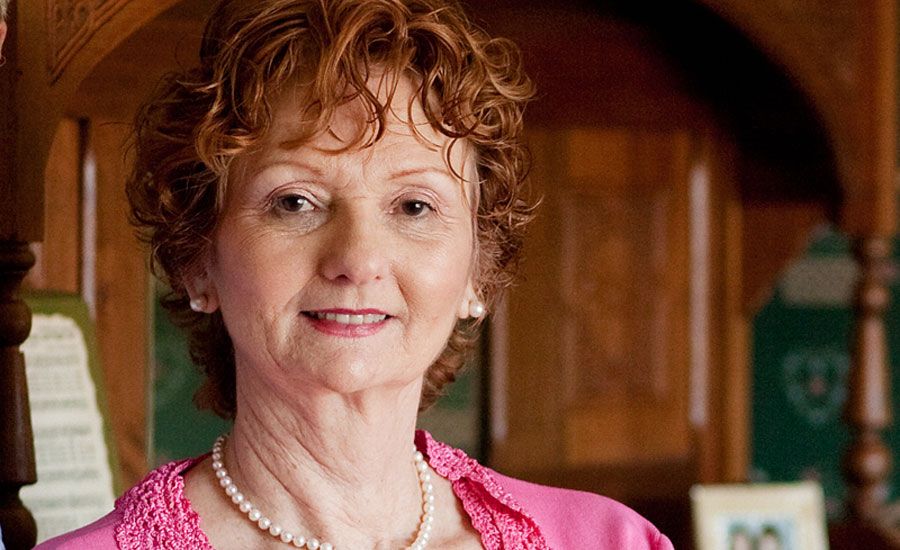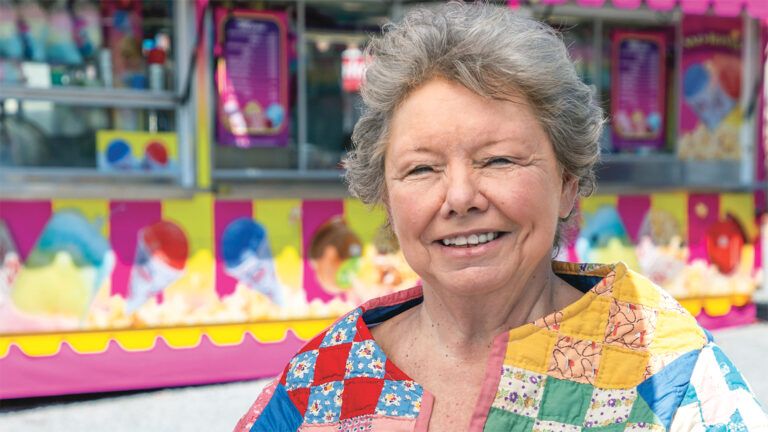I was at the end of my rope. My twin boys were in their “terrible twos” and I simply couldn’t control them. Just trying to keep them still was a struggle. I never knew where they’d go next. The living room was a minefield of toys. The carpet wore the scars of countless spills. The morning alarm was a call to battle, and by each evening I knew I’d lost again.
It had been much easier with my girls, who were eight and 10. They were so quiet and well-behaved I’d been able to get plenty of time for myself—reading, doing volunteer work, even taking art lessons.
“It’s so convenient for you,” I griped to my husband, Jerry. “You can go to work and get away. But I have to deal with this mess day in and day out.” Jerry tried to assure me that the house didn’t have to look perfect. Well, there was no chance of that, what with the unwashed dishes and laundry piling up day by day. Some days I didn’t even get out of my bathrobe. What was the point?
I felt like a failure. It seemed like nothing could make me feel hopeful again. I was so far gone even prayer brought me little comfort.
My friends urged me to seek help. I finally became so sick and tired of feeling sick and tired that I gave in. The counselor I went to see had four children just like I did, only hers were all grown. Obviously she had managed to raise them just fine. She had so much energy and enthusiasm that it wore me out just to look at her.
When I finished spilling out my problems, the counselor asked, “Mrs. West, have you ever heard of Dr. Karl Menninger? He always said there was one surefire way for people who were depressed to feel better. They should find someone who needs help and help them. Will you try it?”
I shook my head vaguely. I could barely drag myself out of bed in the morning. How could I possibly help anyone else?
“You mentioned you used to do hospital volunteer work, Mrs. West. Why don’t you find a day-care center to put your boys in a couple half-days a week and go back to volunteering?”
I was way too weary to argue with her so I agreed to try it. As it turned out Jerry and the girls thought it was a good idea too and the twins were only too thrilled to have an exciting new place to go twice a week.
The following week I went to Athens General Hospital and joined six other new volunteers in watching a demonstration on how to make a bed properly. I didn’t leave a house of unmade beds to make up hospital beds, I thought. Besides, right now I feel better suited to lying in one than making up one. So I went to the office of the hospital’s new recreational therapist and volunteered for her program instead.
“Okay, I’ll give you a list of patients,” she said. “Just take these paints and brushes, knock on their doors and ask them if they want to paint. Remember to smile big and act positive!”
I hoped those art lessons I’d taken would come in handy. I took the list and the painting supplies and rode the elevator up to the hospital’s second floor. I stopped into the ladies’ room and stood before a full-length mirror. I looked so serious I scared myself. Mustering up a pale imitation of a smile, I turned and headed for the first patient’s room.
“Hi, I’m Marion,” I said. “Would you like to paint?”
“No,” came the answer. “And please make sure you close the door when you leave.” It happened again and again. No one wanted to paint and I felt stupid asking. But I kept at it, mainly so I could say that I’d given it my best shot. I finally came to the last person on my list. While I knocked on that door, I glanced at the patient’s information: NAME: Coy Pritchett. AGE: Twenty. CONDITION: Kidney complications/quadriplegic/depression.
I froze for a moment. This man was totally paralyzed. What could I do for him? I cautiously opened the door and stepped inside. I was staring at the heels of a patient on a Stryker frame, a huge wheel-like contraption that keeps a patient immobile while turning him to prevent pressure sores. At the moment Coy was face down. “Hi, I’m Marion. Would you like to paint a picture?” I asked automatically, before realizing how absurd that must sound to someone who couldn’t move his arms.
“Shoot, yeah,” he answered. Yes? For a moment I wanted to run from the room, turn in my name tag and flee back to my wreck of a house. But Coy was waiting on me, so I went over to him. Putting down the painting supplies, I got down on my hands and knees and looked up into his face. He had a dark crew cut and a smile a mile wide. “Hi, Marion,” he said. “I think I’d like to paint a rabbit—like the ones I was always seeing in the woods before I got like this. Do you think maybe you could put the brush in my mouth?”
Would it work? I broke a long-handled brush in two. “Here, I’ll wrap some tape around it so it’s smooth,” I said. Carefully I eased the brush into Coy’s mouth. I mixed up some colors, and held up a canvas under his face. He began to paint. I kept the board as still as I could, though my back and arms ached from the awkward position. After a few minutes the rabbit began to take shape. Not bad, I thought. We took a break and I held up a cup of water for him to drink through a straw.
“Tell me about yourself, Marion. I don’t get many visitors besides my folks,” he said. “You got a family?”
I nodded.
“You must be a great mom,” he said. “You’re so patient.” If he only knew. “I got me a son too,” he continued. “His mama left with him when I got in the diving accident a year ago. I don’t blame her though.” I looked at Coy carefully. I sensed it wasn’t so much the prospect of painting that made him welcome me as a need for personal contact. God, I thought, I know I might not have much to give right now, but please help me be a comfort to this young man.
The next time I came to the hospital I went straight to Coy’s room. We painted and when we needed a rest we talked. I got permission to visit just him during each of my four-hour sessions. Coy was hungry for any story of life outside the hospital’s walls. We talked a lot about our families. Coy’s parents lived nearby and often came to see him. He always painted animals or plants he’d seen in the woods near his house. Once I smuggled a baby blue jay into the hospital as a treat for him. I set it on his chest and he imitated its call. Other times he whistled or sang country songs during our breaks.
I began looking forward to my visits with Coy, checking on his progress, helping him express himself through painting. I found myself more patient with the twins too, knowing I’d get a break from them every few days. Painting with Coy in his hospital room, I felt like we were off in another world. I was so focused on him I didn’t have time to think about my own problems. And when I was with him, I found I didn’t feel so tired anymore.
“So what stunt did the boys pull this time?” he asked one day when I was fretting over the twins.
“Jeremy actually tried to climb up inside the chimney yesterday! He said he wanted to see how Santa Claus did it.”
Coy’s laughter rang off the room’s walls. “Your kids are something else!” he said. Incredibly I started laughing too, for the first time in months. No doubt about it, my kids did keep things interesting. “Yes, but what else?” I asked and doubled over laughing again.
I started getting up earlier, even on days I wasn’t visiting Coy. I’d clean up the kitchen before the twins woke up. Sometimes I’d even walk the girls out to the bus stop. The piles of grimy dishes and dirty clothes still looked daunting—but not unmanageable.
One day I walked into Coy’s room to find him lying in bed with a sheet pulled over him. A nurse quickly explained, “Coy’s having a bad day and doesn’t want to be bothered.” After she left I pulled the sheet off Coy’s face.
“Coy, it’s Marion. Come on, let’s paint.”
He wouldn’t open his eyes.
“Coy, don’t you want to finish that flower you were working on?”
Still no response. Finally I took some water and flicked it at him. A smile played around the corners of his mouth and he opened one eye, then the other. “Okay, okay, you win,” he said with a laugh. “Let’s paint.”
He finished the flower picture that day. I took it and seven other paintings Coy had done to a frame shop and laid them out for the owner. Among them was an owl, a squirrel, an old oak tree. “He paints with his teeth,” I said. “I can only afford to have one framed. Which one do you like the best?”
The owner studied the paintings for a moment, then said, “No charge. I want them all done right. They deserve it.”
They were finished a couple of weeks later. At my next session with Coy I placed the eight beautifully framed pictures under his face.
“Man, oh man,” he breathed. “These are really incredible. Thank that man for me, Marion.”
A few days later, I headed back from the bus stop after seeing the girls off and picked up the newspaper on my way inside. I sat down at the kitchen table and glanced out the window at some robins chittering in the trees. Wouldn’t Coy just love to paint you little darlings! I thought.
I turned to look at the paper and gasped. There on the front page was a picture of a smiling Coy and his framed paintings. Apparently, they were going to be hung in the hospital’s lobby! I was so excited I decided I would wake the boys, so I could read the article aloud to them.
As I got up, I caught sight of the quote below Coy’s picture. “Life sure is sweet,” he said. Yes, it is, I thought. Certainly not perfect or easy but definitely sweet, especially when there are people like Coy to remind you of the joy in the world.
Nowadays there are more ways than ever to treat depression. For me, what it took to start feeling better was to reach out to someone who needed me. But not more than I needed him.
Did you enjoy this story? Subscribe to Guideposts magazine.




